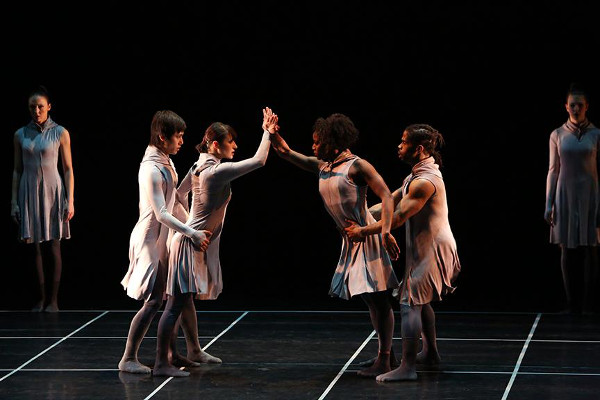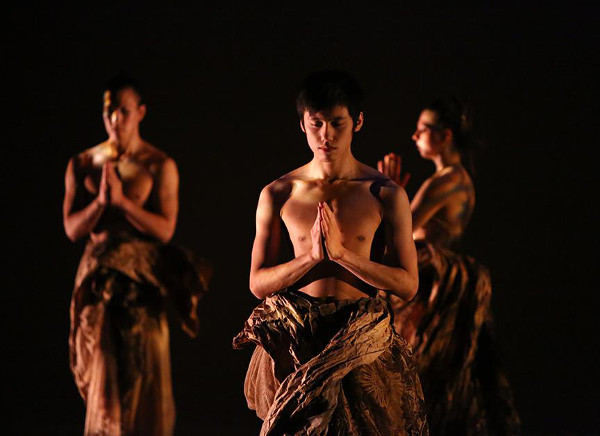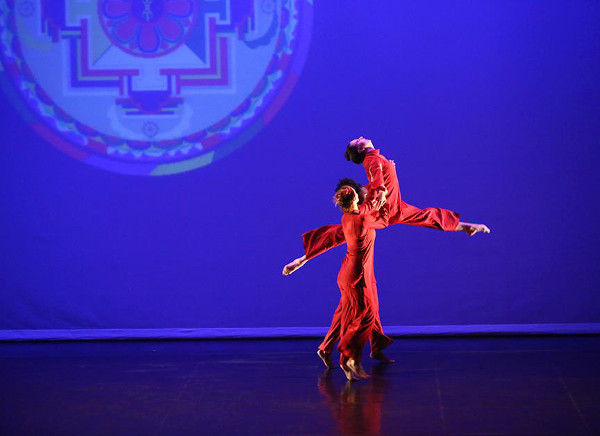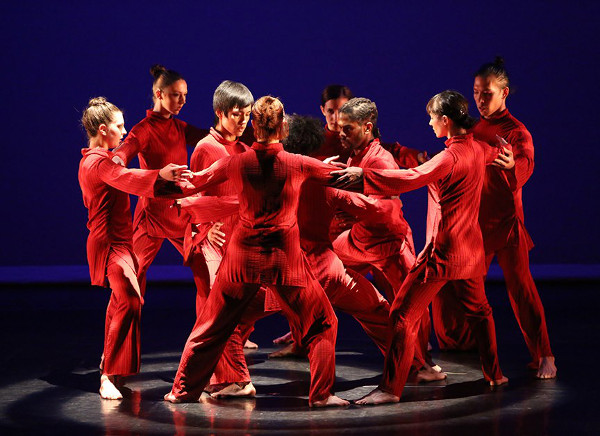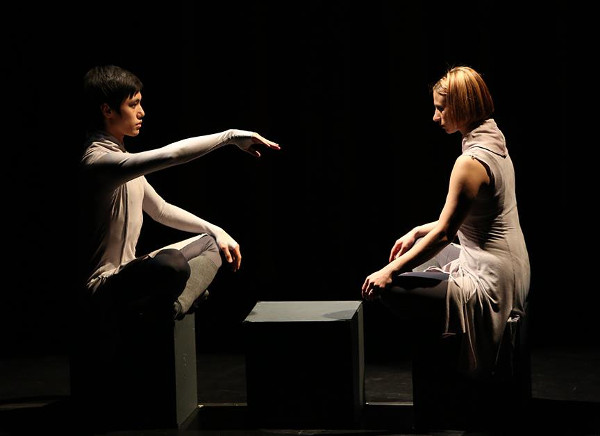
Kun-Yang Lin/Dancers premiere of “One – Immortal Game”
The internationally active and conceptually provocative Philadelphia-based Kun-Yang Lin/Dancers (KYL/D) graced Drexel University’s Mandell Theater on March 22 and 23 with their spring appearance. Those in attendance were fortunate enough to witness not only the world premiere of “One – Immortal Game” but also a return of the 2011 “Mandala Project,” which served as a complementary performance alongside its newer counterpart.
In many ways, both works can be approached in terms of a geometric sensibility. While the “Mandala Project” is focused on the rounded patterns and continuity of circles, spirals and, of course mandalas, “One – Immortal Game” places its emphasis on the rigidity of squares, grids and straight lines. Running back-to-back, these two dances ultimately counter one another and exist as an interplay of themes while also remaining distinctly separate, individual creations.
The faux chess match that opens Kun-Yang Lin/Dancers “One – immortal game.” Photo by Photo by Bill Hebert (BHPhotos)
At the onset of “One – Immortal Game,” two performers sit on a pair of cubes, another placed directly between them like a table. This work, drawing its imagery from boxes, immediately takes on the burdensome topic of competition by replicating a chess match. The two performers shout as they move imaginary game pieces atop the center cube until the curtain rises, revealing a much larger game board-like grid laid out across the stage floor.
Kun-Yang Lin/Dancers, “One – immortal game.” Photo by Bill Hebert (BHPhotos)
Initially, blue lights illuminate the space as the dancers emerge (later shades of pink). Their cold glow mirrors the outfits of the ensemble which are all identical, gray, hooded robes. These garments are somewhat androgynous and also distantly resemble uniforms. As the dancers move, their paths are noticeably like military formations, following the lines below them and occasionally slicing across in sharp diagonals. There is also a clear divide between the two sides much like a two player game or wartime border.
Heavy rhythms over ambient drones and soft piano tones drive the battle forward like some acrobatic war reenactment. At any given moment, however, the actions of the dancers seem to flip between skirmishing and assisting each other. Occasionally their fighting wanes to seem more uplifting and at times even resembles lovemaking, blurring the boundaries between love and hate, violence and tenderness. This oscillation between division and unity, competition and community objectively dissects the topic of struggle throughout history. The “others” of an opposing group tend to provoke a very particular line of action, much like a response to one’s own side. Judging by the ubiquity of conflict throughout time, it seems these lines in the sand are more primal than we realize.
Two sequences serve to divide this checkmating a bit. Midway through, three performers flip the cubes around the center of the stage as if participating in some ceasefire cleanup effort. Their labor also mimics the eternal toil of Sissyphus as he pushes a stone uphill, only to have it fall back down every time. Near the end of this piece, one dancer with a single long, white sleeve spins through the empty battlefield as if anointing the ground with the flowing fabric around his arm, a sort of truce having been reached.
Kun-Yang Lin/Dancers pause to pray during part of the opening sequence for “Mandala Project.” Photo by Bill Hebert (BHPhotos)
After the intermission, KYL/D return to the stage to revisit the “Mandala Project.” While many manifestations of human interaction take place in “One – Immortal Game,” the second dance serves to meditate on the oneness of experience. As the dancers emerge, they are lumbering, clad in long cloth strips that look very much like crumpled paper. They all cling close, as one unit, and eventually begin to spin out away from the group until they are wrapped up neatly as individual packages, at which point they begin to enter into a praying gesture. All of the movements here are fluid and rounded, blunting the sharper feelings of structure and division in the first half.
A mandala is visible beneath the leaping performers during the Kun-Yang Lin/Dancers “Mandala Project.” Photo by Bill Hebert (BHPhotos)
Later a figure rests in a meditative pose, back to the audience, as one dancer laps around an onstage projection of a circle. As the performer orbits this central star she is followed by a bright flashlight shone by otherwise still silhouette, casting her shadow onto the back wall. This exaggerated form at once attempts to meet and join her body as well as fall back and chase her. As this doppelgänger dance fades, our egos are left eclipsed in its wake. A colorful mandala projection then appears like a full moon, silently invoking the ancient symbol from which this work takes its name.
The spiraling end of “Mandala Project” by Kun-Yang Lin/Dancers. Photo by Bill Hebert (BHPhotos)
For the final segment, the red-clad dancers gather around a brightly lit spiral on the ground. This Fibonacci journey is spiritual as much as it is physical and remains the focal point until the end. Like a wormhole, it draws in the dancers and viewers with its hypnotizing light, only to be transported.
The athletic and sensuous movements of the Kun-Yang Lin/Dancers are an impressive visual treat, but with this particular configuration, the language of their expression also overlaps with the worlds of mathematics, struggle, community and oneness, transforming dancers’ bodies into a catalyst for social and cosmic contemplation.
Kun-Yang Lin/Dancers: 1316 South 9th St., Philadelphia; [email protected]; kunyanglin.org
Recent Content
-
Artsarticle ·
-
Artsarticle ·
-
Artsarticle ·
